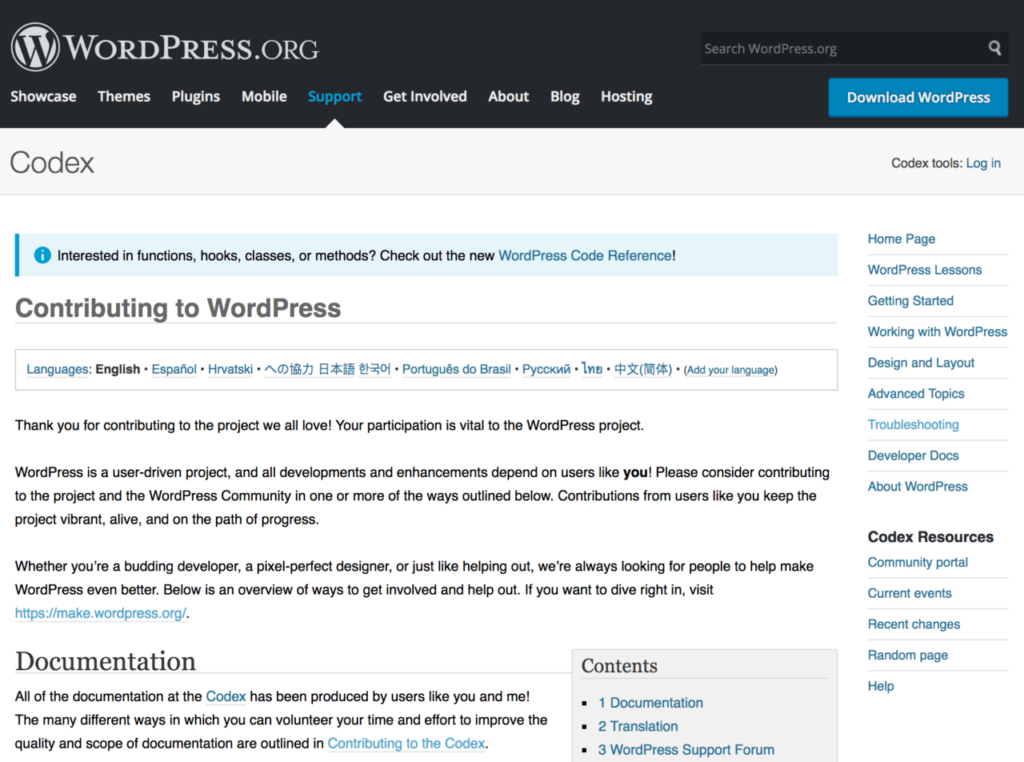This article on Contributing to WordPress was originally published by Torque Magazine, and is reproduced here with permission.
WordPress is huge, and so is its community. What’s more, WordPress was built on collaboration and has always been welcome to new developers contributing to the project. However, while you may want to help the platform grow even further, it can be hard to know where you could apply your skills.
Fortunately, getting started with WordPress development is easy, regardless of how you’d like to take your first steps. There’s almost certainly a task that will suit you perfectly, whether that’s contributing directly to the WordPress core, testing for bugs, or helping out in one of many other ways.
This piece will look closer at the several different areas of WordPress and how you can start contributing to them. However, first, we’ll talk about what contribution entails, and why you’d want to do it. Let’s dive in!
What Contributing to WordPress Means
Regular readers of the Torque blog will know that we’ve discussed the reasons you’d want to develop using WordPress previously, and also explored some of the misconceptions that can arise about developing for the platform. Rather than repeating ourselves here, we’ll just say that we think WordPress is the future of web development.
There are plenty of recent and future WordPress innovations you may want to get involved with. These include exciting technologies such as the REST API (including how WordPress can become ‘headless’) and the impending Gutenberg editor. In fact, here on the blog Josh Pollock recently looked at how WordPress’ two biggest innovations work with each other to potentially create stunning designs.
For the uninitiated, WordPress’ open-source nature means that everyone can potentially get involved. If you’re a developer, the door opens even wider and enables you to actively contribute not only to the base code, but to documentation, support requests, and more. In the next section, we’re going to talk about the specifics of how to actually contribute to WordPress’ development.
How You Can Start Contributing to WordPress (3 Ways)
Contributing to WordPress as a developer takes three main forms for first-timers – dive into the Codex, work on core platform code, or help out with WordPress’ myriad other areas. Let’s take a look at each approach in turn.
1. Improve WordPress’ Documentation

Even if you have no development knowledge, you’ve probably browsed at least one page of the official WordPress Codex. This is a community-run initiative that aims to document every aspect of WordPress in a wiki-style format. Think of it as the knowledge base for both the entire WordPress platform, and the user base as a whole.
With this in mind, you can imagine that keeping a project such as this up to date is difficult, especially with WordPress’ update schedule. In addition, because the Codex is a community project, there’s an inevitable ‘waxing and waning’ related to which pages and sections are regularly updated. For example, hot WordPress topics such as Gutenberg or the REST API see more attention than esoteric aspects such as specific function calls and hooks.
For this reason, contributing to the WordPress Codex provides immense value to the whole community. Once you’ve signed up, created a user page, and read the guidelines, there are three key areas that need assistance:
- Maintaining and administering to the Codex, including tagging and categorizing pages, and checking recent changes.
- Creating and managing the content itself, including translation and editing the example code.
- Involving yourself in the growth and evolution of the Codex. You can do this by joining the dedicated mailing list and the regular group chats.
The post A First-time Developer’s Guide for Contributing to WordPress appeared first on SitePoint.
No comments:
Post a Comment